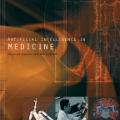Parental control apps, which are mobile apps that allow parents to monitor and restrict their children's activities online, are becoming increasingly adopted by parents as a means of safeguarding their children's online safety. However, it is not clear whether these apps are always beneficial or effective in what they aim to do; for instance, the overuse of restriction and surveillance has been found to undermine parent-child relationship and children's sense of autonomy. In this work, we investigate this gap, asking specifically: how might children's and parents' perceptions be related to how parental control features were designed? To investigate this question, we conducted an analysis of 58 top Android parental control apps designed for the purpose of promoting children's online safety, finding three major axes of variation in how key restriction and monitoring features were realised: granularity, feedback/transparency, and parent-child communications support. To relate these axes to perceived benefits and problems, we then analysed 3264 app reviews to identify references to aspects of the each of the axes above, to understand children's and parents' views of how such dimensions related to their experiences with these apps. Our findings led towards 1) an understanding of how parental control apps realise their functionalities differently along three axes of variation, 2) an analysis of exactly the ways that such variation influences children's and parents' perceptions, respectively of the usefulness or effectiveness of these apps, and finally 3) an identification of design recommendations and opportunities for future apps by contextualising our findings within existing digital parenting theories.
翻译:父母控制应用程序是移动应用程序,允许父母在网上监测和限制子女活动。 父母控制应用程序是移动应用程序,允许父母在网上监测和限制子女的活动。它们正越来越多地被父母采用,作为保障子女在线安全的一种手段。然而,尚不清楚这些应用程序是否总是有益或有效;例如,过度使用限制和监督已发现损害父母-子女关系和儿童自主感。在这项工作中,我们调查了这一差距,具体询问:儿童和父母的看法如何与父母控制功能的设计联系起来?为了调查这一问题,我们分析了58个顶级Android父母控制应用程序,目的是促进儿童在线安全,在关键限制和监测功能如何实现方面发现了三大差异:颗粒、反馈/透明以及父母-子女沟通支持。为了将这些轴与感知的好处和问题联系起来,我们随后分析了3264项应用审查,以确定上述轴的每个方面,如何与父母控制功能的每个方面有关,我们了解儿童和父母对与这些应用程序内部经验的这些方面的看法,我们发现如何与这些背景限制和监测功能的三种不同之处,我们最终理解了父母对各种机会的变异性。



